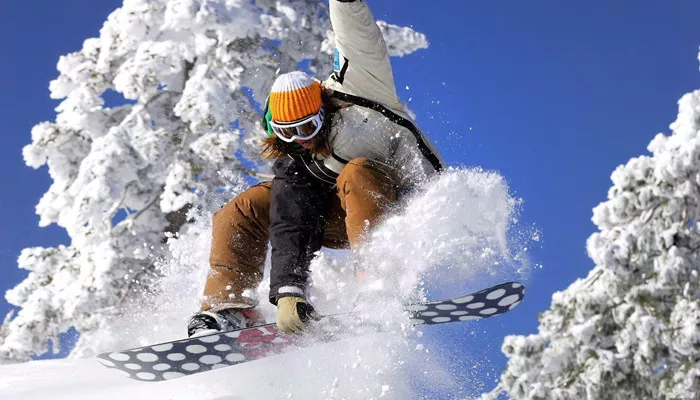Snowboarding is one of the most popular winter sports worldwide, known for its combination of athleticism, adrenaline, and style. As the sport has grown, so has its inclusion in major international competitions. One of the most significant milestones in snowboarding’s history was its addition to the Paralympic Games.
But is snowboarding a Paralympic sport? The short answer is yes. However, its inclusion, evolution, and classification within the Paralympics are topics worth exploring in detail. This article delves into the journey of Paralympic snowboarding, its history, classifications, events, and the impact it has had on adaptive athletes.
1. The History of Snowboarding in the Paralympics
The path to including snowboarding in the Paralympics was not immediate. Unlike its Olympic counterpart, which debuted in 1998 at the Nagano Winter Olympics, Para snowboarding took longer to gain official recognition.
Pre-2014: Before its Paralympic inclusion, adaptive snowboarding had limited exposure in international sports events. Organizations such as World Snowboard Federation (WSF) and International Paralympic Committee (IPC) worked to develop standards and classifications for the sport.
2014 Sochi Paralympics: Snowboarding was officially included in the Paralympic Winter Games for the first time, under the discipline of Para alpine skiing. The only event held was men’s and women’s snowboard cross in the lower-limb impairment category.
2018 PyeongChang Paralympics: Snowboarding saw an expansion with three medal events for both men and women: banked slalom and snowboard cross in two different classification categories.
2022 Beijing Paralympics: The sport continued to evolve, offering even more competitive opportunities for adaptive athletes.
2. Classifications in Paralympic Snowboarding
Classifications in Para snowboarding ensure fair competition by grouping athletes based on the type and level of their impairment. The International Paralympic Committee (IPC) has established classification categories that are divided into SB-LL1 and SB-LL2, both of which focus on lower-limb impairments.
SB-LL1 (Severe Impairments)
For athletes with significant lower-limb impairments, such as amputation above the knee or severe muscle weakness in both legs.
These athletes may use prosthetics or adaptive equipment while competing.
SB-LL2 (Moderate Impairments)
For athletes with a milder level of impairment, such as below-the-knee amputation or limited range of motion in one leg.
These competitors have more balance and stability compared to SB-LL1 athletes.
The classification system ensures that athletes compete against others with similar physical abilities, maintaining fairness and competitiveness in the sport.
3. Events in Paralympic Snowboarding
Currently, Para snowboarding features two main events at the Paralympic Winter Games:
Snowboard Cross
A head-to-head race where riders compete on a challenging downhill course with jumps, turns, and obstacles.
The top riders progress through rounds to reach the finals.
This event is high-speed, action-packed, and a fan favorite.
Banked Slalom
A timed race where athletes maneuver through a winding downhill course with banked turns.
The goal is to complete the course in the fastest time possible.
Requires precision, agility, and technical skills.
These events test a rider’s speed, control, and adaptability to different course conditions, making Para snowboarding a thrilling sport to watch and compete in.
4. The Growth and Impact of Paralympic Snowboarding
Since its introduction in 2014, Para snowboarding has gained significant popularity. Several key factors have contributed to its growth:
Increased Visibility: The Paralympics provide a global platform, inspiring more adaptive athletes to take up snowboarding.
Technological Advancements: Innovations in prosthetic limbs, adaptive bindings, and snowboard design have improved accessibility for riders with impairments.
More Training Opportunities: Snowboard programs for adaptive athletes have expanded, offering professional coaching and facilities.
Equal Recognition: More effort is being made to provide equal prize money, sponsorships, and media coverage for Para snowboarders.
The continued expansion of Para snowboarding ensures that more athletes with disabilities can experience the thrill and challenge of competitive snowboarding.
5. How to Get Involved in Para Snowboarding
For individuals with disabilities who want to try Para snowboarding, several pathways exist:
Adaptive Snowboarding Programs: Organizations such as Adaptive Action Sports (AAS) and Move United offer beginner programs and training camps.
Local Ski Resorts: Many resorts now offer adaptive ski and snowboard lessons with specialized instructors.
National Paralympic Committees (NPCs): Each country’s NPC can provide information on how to join competitive Para snowboarding events.
International Competitions: Athletes who progress can compete in World Para Snowboard Championships and Paralympic qualification events.
Conclusion
So, is snowboarding a Paralympic sport? Absolutely. Since its 2014 debut, Para snowboarding has established itself as a thrilling and competitive discipline within the Winter Paralympics. With structured classifications, high-energy events like snowboard cross and banked slalom, and increasing global recognition, the sport continues to grow in both popularity and accessibility.
For aspiring athletes with disabilities, there has never been a better time to get involved in adaptive snowboarding. Whether for recreational enjoyment or elite competition, Para snowboarding is proving that anyone can experience the joy and excitement of shredding down a mountain.

